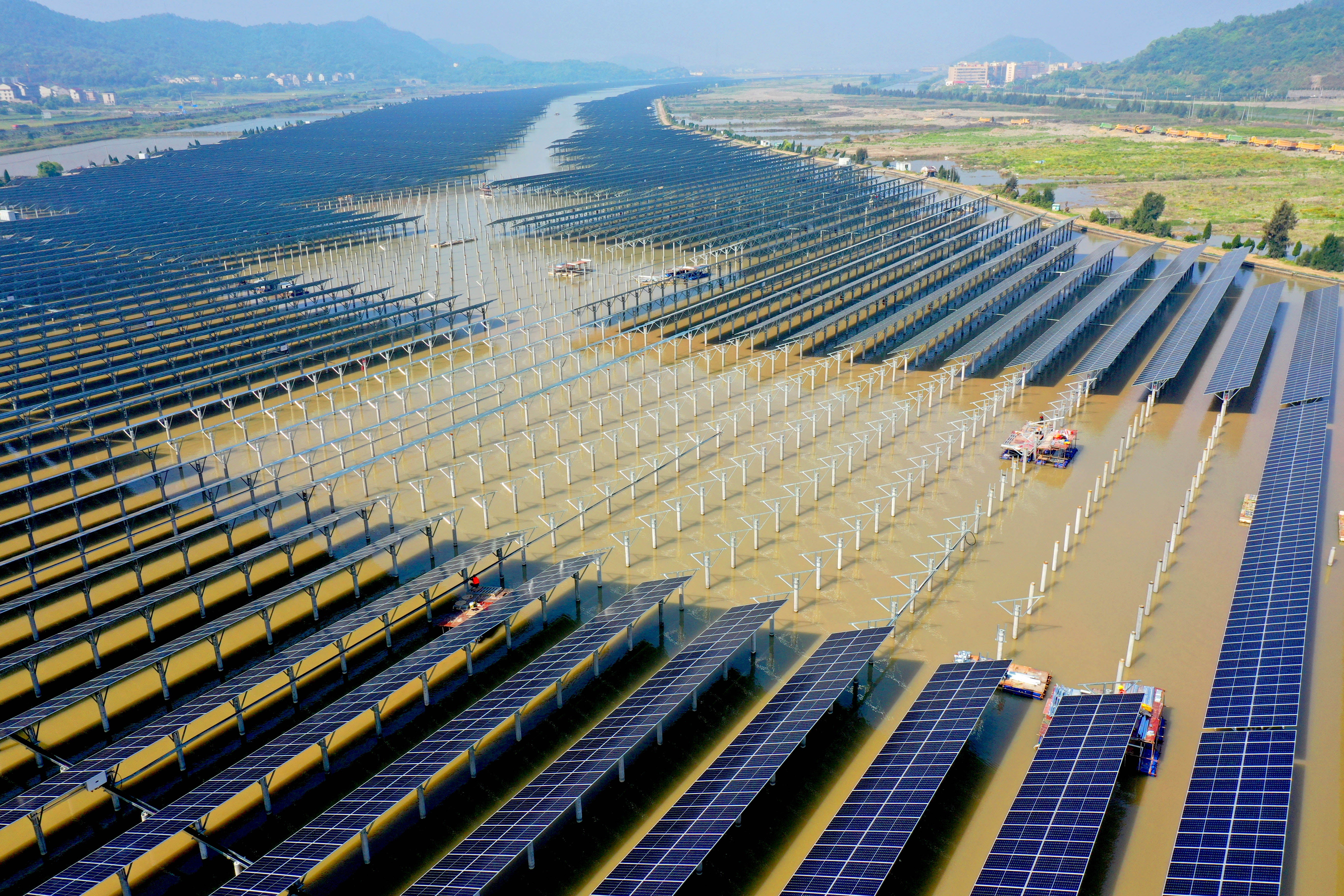
China once again topped the world in clean energy investments last year, a trend that could challenge U.S. efforts to develop more homegrown manufacturing.
Nearly half of the world’s low-carbon spending took place in China, according to a recent analysis from market research firm BloombergNEF. The country spent $546 billion in 2022 on investments that included solar and wind energy, electric vehicles and batteries.
That is nearly four times the amount of U.S. investments, which totaled $141 billion. The European Union was second to China with $180 billion in clean energy investments.
China also dominated in low-carbon manufacturing, accounting for more than 90 percent of the $79 billion invested in that sector last year, according to the report.
The findings come as the U.S. and Europe work to expand domestic manufacturing capacity. The United States has begun in recent months to roll out the benefits of the Inflation Reduction Act, which is packed with $369 billion of incentives aimed at building up the U.S. clean energy industry.
But competing with China’s networks won’t be easy.
“China has managed to nurture these really integrated, efficient value chains for making things like solar panels, for making things like battery cells,” said Antoine Vagneur-Jones, head of trade and supply chains research at BloombergNEF.
Both now make up a substantial percentage of China’s export revenues, he added. But China is also investing heavily in domestic supply chains, including wind turbine components for a massive expansion in offshore wind deployment, Vagneur-Jones said.
The Inflation Reduction Act aims to counter China’s dominance by offering billions of dollars in subsidies to domestic manufacturing. One major provision, for example, will offer consumers thousands of dollars in tax credits when purchasing an electric vehicle — but only when the bulk of battery components are made or assembled in North America.
Those incentives have generated strong international criticism, particularly from the European Union. But President Joe Biden has been clear what he’s aiming for, saying in a speech last week that “the supply chains are going to start here” (Climatewire, Jan. 27).
BloombergNEF’s figures don’t account for the dozens of planned U.S. factories announced in recent months. But while Inflation Reduction Act incentives will start to make a dent in China’s share of manufacturing, Vagneur-Jones said, it will happen gradually.
“Even in a sort of, say, optimistic scenario, I think China’s still going to remain dominant for the next decade or more. But it could mean that we see sort of these parallel supply chains develop,” he said.
Take battery cell manufacturing. It’s expected to increase sixfold by 2030, but China’s share of the market is projected to decline to just 70 percent from 79 percent today, BloombergNEF research shows.
That’s partly because China plans to expand its battery manufacturing capacity, even as supply chains get built up elsewhere. There are also barriers to ramping up clean energy manufacturing in the United States, including higher costs and the challenges of developing a new sector from scratch.
The task could be even more difficult if tensions between China and the U.S. increase, curtailing the ability of U.S. companies to access Chinese expertise on clean energy development, Vagneur-Jones said.
“The offshoot is not just that production will be more expensive in places like the U.S., which it would be, but also that it might be very difficult to really scale things up fast, because of the fact that you can’t tap into that Chinese expertise,” he said.
There are risks to having supply chains so heavily concentrated in one geographical area. Geopolitical tensions can more easily disrupt trade, as can the impacts of climate change. For example, a major heat wave led to power shortages last August in a Chinese province that supplies a significant amount of the world’s solar panels and components — leading to a price increase for those goods.
The next few years will be decisive, Vagneur-Jones said. The United States, Europe, India and Indonesia are all ramping up their domestic manufacturing efforts. The question is whether those plans bear fruit.
“We could see a turning point for this trend that we’ve seen, which has been China’s dominance in not just the existing capacity that’s been built, but also ongoing investments,” he said.
